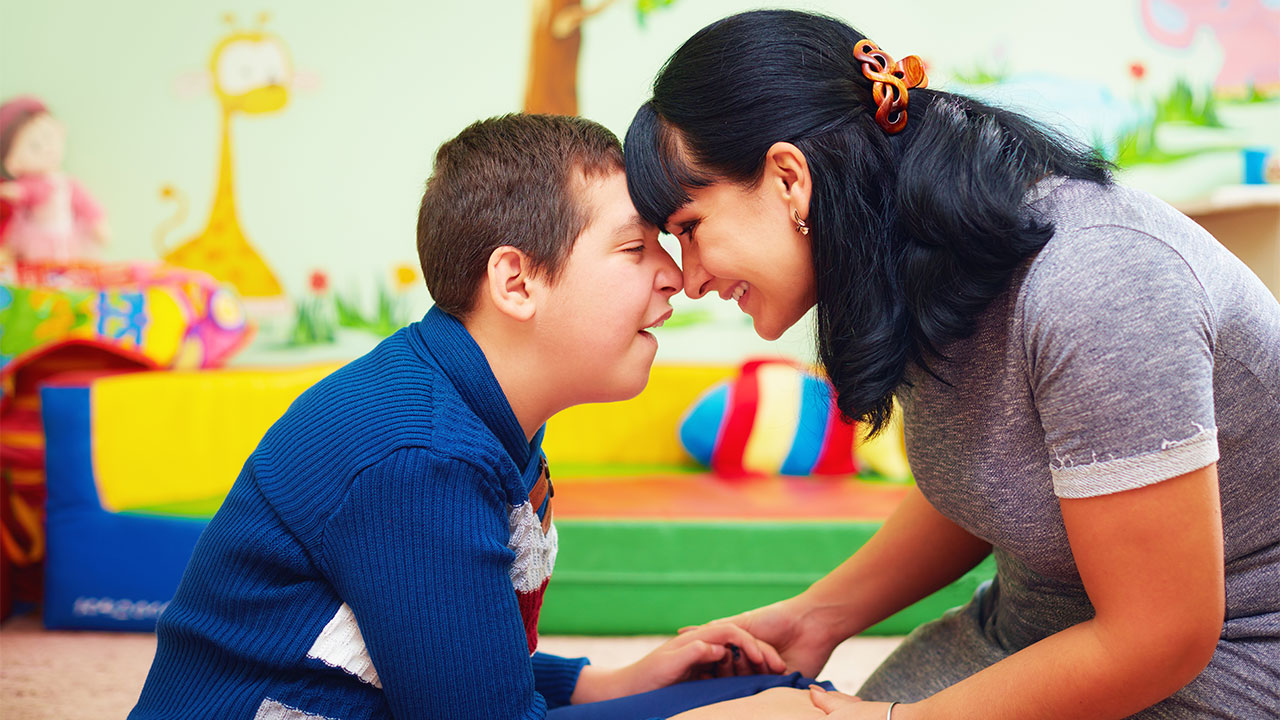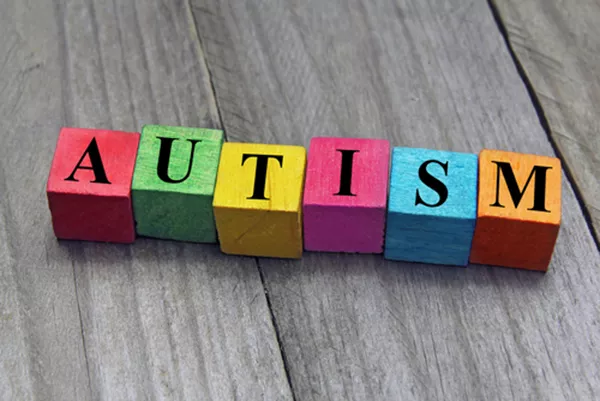What is Autism?
Autism, Autism Spectrum Disorder, or ASD is a neurodevelopmental disorder that affects a person’s social and communication abilities. Persons with ASD also have areas of strong interest and sometimes have repetitive behavior and sensory sensitivities. Autism is sometimes associated with strengths in the areas of visual memory, music, art, and math and science. Each person with ASD is unique. Autism is a spectrum disorder, ASD varies significantly from person to person. Some people with ASD may require significant support in their daily lives, while others may need less support, and some live entirely independently. Changes in brain development associated with autism begin during the prenatal period. These changes are associated with differences in genetics. It is possible to diagnose ASD when a child is 18-24 months of age. Early behavioral intervention helps children with autism learn to communicate and socially interact and has a significant impact on long term outcome. Support for learning social and communication skills can be helpful throughout adolescence and adulthood. People with autism sometimes have other conditions, such as higher rates of sleep disorders, ADHD, anxiety, depression, and gastrointestinal issues.
Autism is becoming more and more common. Parents often ask me about the signs of autism and while speech-language pathologists like me can’t diagnose autism. It’s specially trained doctors or psychologists that do this. We are trained to be aware of some of the signs of autism so that we can give parents the right guidance early on. We’re often the first professionals that families speak to about developmental concerns, and this is because we get involved early to address early. Developing skills like communication, play and social interaction and these are often areas that children with autism have difficulty with.

Being aware of the signs and symptoms of autism is important so that you can speak to your doctor or developmental specialist right away. If you see any of these signs, we know that the earlier intervention is, the better outcome is for children. So, the earlier you can get something started, the better.
Autism is a complex developmental condition with a neurological component, and it can make interacting with others and processing information difficult. Each child with autism is unique, but it is in their unique neurological makeup that we can see certain traits or behaviors develop. and if these traits or behaviors that I want to talk to you about today. Remember if your child has one or even some of these traits, it doesn’t necessarily mean that your child has autism. But it may mean that you’d want to speak to a doctor or a specialist to find out a little bit more information about further assessment.
- The first sign is not consistently using eye contact to gain your attention.
At 12 months of age, typically, children will use eye contact to either show you something, start a conversation, or express their feelings, or request something. For example, if you were rolling a ball back and forth between your 12-month-old and you. stop rolling that ball, what you would typically see is the 12-month-old would look at the ball, then maybe make a noise and then look up at you. And that would be to tell you, “Hey, why aren’t you rolling that ball back to me?” Whereas a child who is having difficulty with giving eye contact to gain your attention might just continue to look at that ball.
- The second red flag is not consistently using gestures.
By 12 months of age, babies use a wide range of gestures to communicate with you. they might hold their arms up to tell you that they want to be picked up. They might hold their hand out to just show you something that’s in their hand. They might wave hello or goodbye. They might clap their hands. They might shake their heads, yes or no. And lastly, they might point. For example, your baby might point to the bottle that’s on the bench then look at you, which is the key component, they look back at you to make sure that you follow their point and you understand what they’re asking. But a baby who finds it difficult to consistently use gestures might, instead of pointing, just go and grab your hand and not look up at you, and then take you over to the bottle, and place your hand on the bottle. And that is how they communicate with you that they want that bottle.
- The thrid red flag is no response to gestures or copying your actions or gestures.
At 12 months of age, babies respond to a wide range of gestures, which are used by parents or others. For example, if you were out walking with your baby and you said, “Look, there’s a dog,” while pointing, typically, the child will look in that direction and try to find that dog. Also, babies are sponges, and they love to copy.

At 12 months of age, when you do a gesture or an action, typically, you are going to see your toddler do that exact same action. you might clap, and they will clap, or you’ll say, “Wave goodbye,” and then they will wave goodbye, or you will smile at them, and they will smile in return. You will also notice that toddlers will want to copy everyday actions that you’re doing. while you’re brushing your hair, your toddler might want to brush their hair as well. Or while you’re brushing your teeth, your toddler might want to brush their teeth or try and brush yours.
If you find that your toddler is not responding to your gestures or not copying your actions or gestures, then that is also a red flag.
- Rarely sharing their interest or enjoyment with others is also a red flag.
At 12 months of age, they are extremely social beings that have a strong desire to share any of their enjoyment with you. And they do that in multiple ways. For example, when you walk past your toddler, they might smile at you to try and engage you in a conversation. They might laugh with you. They might come up and hold a toy in front of you so that you can see what they’re wanting to show you. Or they’ll point to an object that’s of interest to them. they might point to a toy that’s on a shelf or they might point to a dog that’s outside. They might look up at you to request more. And you’ll also notice that when they are playing, they will frequently look back at you, just to make sure that you stay in the room and just to check in.
A toddler who’s finding it difficult to share enjoyment with others might play and be smiling and laughing while they’re playing, but they don’t refer back to you. they won’t look back at you. Or they might come and show you a toy by dropping it into your lap or into your hands, but they don’t look up at you to share that interaction and that enjoyment. Or lastly, they might point at something of interest to them. they might be out walking with you and pointing to a dog, but they don’t look back at you to make sure you’ve followed that point and know what they’re pointing at.
- Repetitive actions or movements can also be a red flag.
Now when we’re talking about repetitive actions or movements, we can be talking about the child’s play or their body movements. In regards to a child’s play, they might have a very particular interest, or they might get stuck on a particular object or toy, and do the same action over and over again. For example, your little one might enjoy turning the light switch on and off, on and off, or they might enjoy watching the fans spin around, or just looking at the lights in the room. They might enjoy just watching the sand fall from their hand when they’re in the sand pit rather than using a spade to fill up the bucket. Or they might enjoy watching the wheels spin on a truck or a train, rather than actually driving that train around. In regards to body movement, what you typically see is the child doing the same movement over and over again. This might be hands splaying or finger circles. Or the child might put the hand in front of their face, and then wave their fingers to see the changing light. You might see the flapping of the hands at the side of their body. You might see them walking on their toes most of the time. Now it needs to be most of the time, not sporadic. Or you might also see that hand stiffening when they are walking. Or the child might shake their head back and forward as a form of play. Or they might enjoy running around in circles. Now doing these behaviors for a few days is completely fine, but if your child continues to do these behaviors and that’s their kind of form of play, then that is a potential red flag.
- Another red flag is not consistent responding to when their name is called or the sound of a familiar voice.
At 12 months of age, they will typically respond to their name being called on the second or third attempt, particularly if they’re engaged in activity. If your child’s hearing is fine, and they’re not responding consistently to their name being called, even when you’re directly in front of them, then that is a red flag. But if you notice that your toddler is extremely social and tries to interact and engage you in play, and is babbling and smiling, but they just don’t respond to their name being called when their back is turned to you, then that might be an indication that their hearing needs to be assessed.
- Not babbling is also a red flag.
At 12 months of age, a toddler may say their first words, but they are definitely using babble in a conversational way. And by that, I mean they are directing their babble towards someone. You will also notice that when you speak to your toddler and you stop talking, your toddler will start to babble back as if they’re saying real words. And their babble also changes up and down in pitch. Instead of going the ga-ga-ga or ba-ba-ba, they start to have it go up and down as if they’re having a real conversation with you.

If you notice that your toddler is not babbling, or when they are making sounds, it doesn’t sound like they’re actually having a conversation with you, then that is a red flag.

